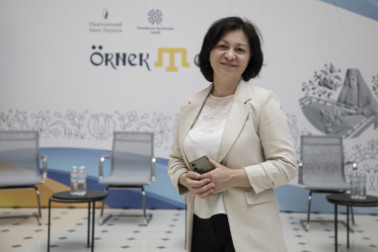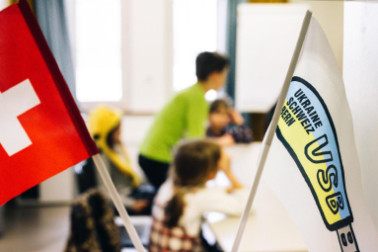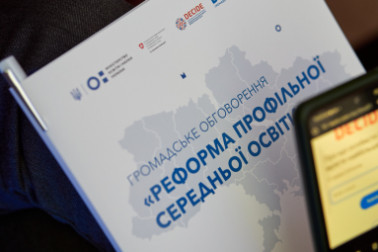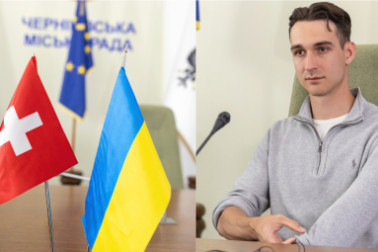All monuments have a plate with a name and a QR code. You can scan the code and learn the backstory of the monument right on spot. The map with locations of all monuments is included at the end of the article for your convenience.
Kyiv Cake
 While chestnut stays a more officially ingrained symbol of Kyiv, for many tourists and locals the famous Kyiv Cake became the more familiar and natural epitome of the capital. It's interesting that the creation of the cake is wrapped in numerous legends.
While chestnut stays a more officially ingrained symbol of Kyiv, for many tourists and locals the famous Kyiv Cake became the more familiar and natural epitome of the capital. It's interesting that the creation of the cake is wrapped in numerous legends.
One of them states that Kyiv cake was an accident when pastry cooks forgot to put ingredients necessary for a sponge cake into the fridge. Their colleagues, Kostiantyn Petrenko and Nadezhda Chernogor, attempted to fix the mistake with covering the cake with buttercream, sprinkling with vanilla powder and putting little flower decorations on top.
However, the real story was as far as possible from the legends. Kyiv Cake is a result of meticulous calculating of two employees of Karl Marx Confectionary Factory, who first released the recipe in 1956. Nowadays the rights for Kyiv Cake are owned by Roshen confectionary and the cake still stays one of their best selling products.
Kyiv Candied Fruit
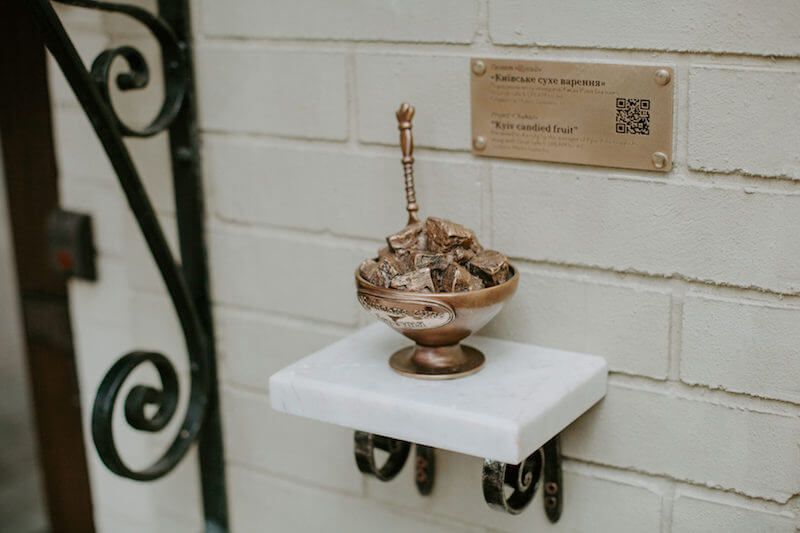
Another sweet treat tied into the history of Kyiv is candied fruit - long, see-through slices of fruit boiled in sugar syrup and rolled in fine sugar. While the rise of the candied fruit was undoubtedly the late 18th-early 19th centuries, its first appearance was documented way earlier. In the 14th century, Kyiv dried fruit was brought to the wedding celebration of the Lithuanian prince. Later, it was specially delivered to Katherine II.
You can also be among those to try the sweet treat. Київське Сухе Варення company uses the recipe restored from the 1861 recipe book. The company's array of flavors includes classic apples, oranges, pears, as well as more unusual rhubarb, carrot, beetroot and lemon.
Chestnut
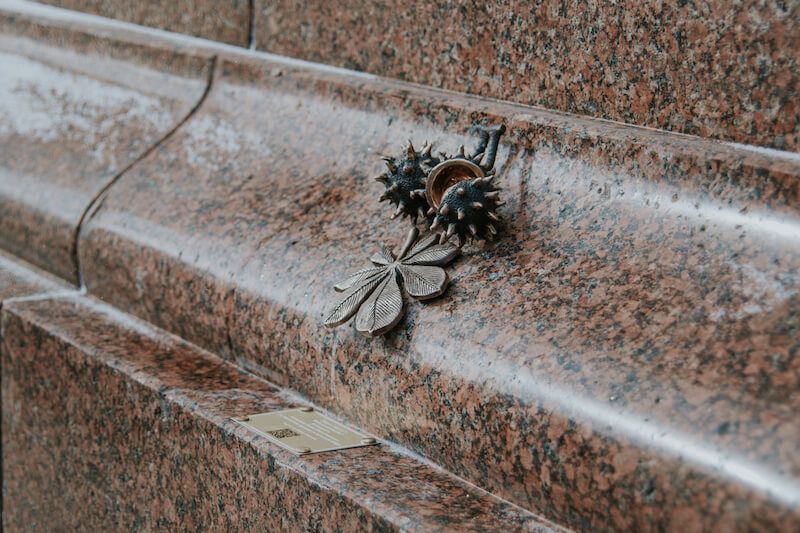 Chestnut became an official symbol of Kyiv during the Soviet era, replacing Archangel Michael. Making the tree an official symbol means it used to grow here for centuries at least. While the planting of the first chestnut has not been documented, we know where to find the oldest and biggest chestnut in Kyiv. It is located near the Holy Trinity Monastery in Kytaiv, a historical area often overlooked by tourists. The tree is approximately 300 years old and soars 15 meters high. According to one of the legends, it was planted by Metropolitan Petro Mohyla, the founder of Kyiv Mohyla Academy.
Chestnut became an official symbol of Kyiv during the Soviet era, replacing Archangel Michael. Making the tree an official symbol means it used to grow here for centuries at least. While the planting of the first chestnut has not been documented, we know where to find the oldest and biggest chestnut in Kyiv. It is located near the Holy Trinity Monastery in Kytaiv, a historical area often overlooked by tourists. The tree is approximately 300 years old and soars 15 meters high. According to one of the legends, it was planted by Metropolitan Petro Mohyla, the founder of Kyiv Mohyla Academy.
The 1826 historical record by a researcher Maksym Berlinski states that "a beautiful decorative tree appeared on Podil among walnut, apricot and other fruit trees". It is believed that chestnut was brought from Hungary at the time.
It's also interesting to note that the Old Kyiv, also called Upper City, didn't have any chestnuts until the late 19th century. In 1839-1849, architect Vikentii Beretti planned to build a boulevard now known as Shevchenko Boulevard. The street was peppered with chestnuts but wasn't approved by the emperor Nicholas I of Russia, so the trees were quickly re-planted in the neighboring courtyards. This was the reason why chestnuts spread around the city and ultimately became one of its symbols.
Kyiv Carriage
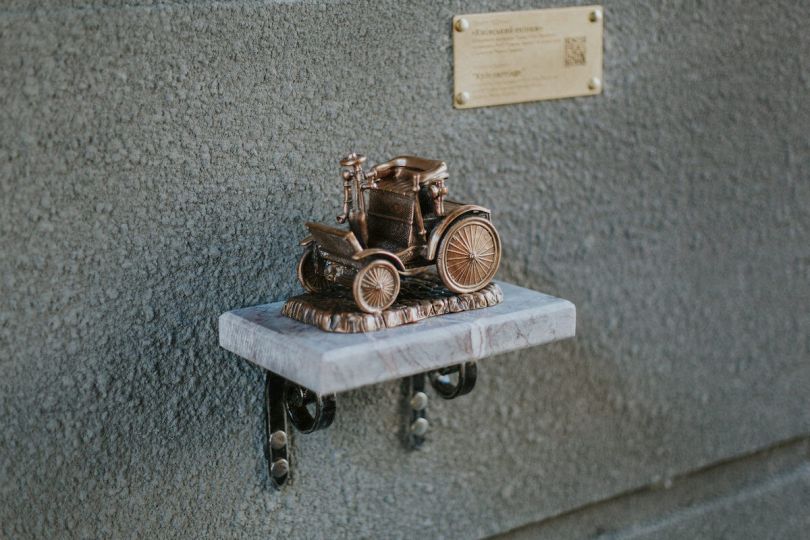 This sculpture was installed on the 120th anniversary of the first carriage that appeared in Kyiv. It happened on July 10 in 1897 and caused such an uproar among the city dwellers it was reflected in a newspaper article. The newspaper states that the carriage that rolled on the Podil streets became a true sensation much because of the technological advance - no horses were needed to make it move. The carriage was powered by a kerosene engine hidden inside and hosted three passengers.
This sculpture was installed on the 120th anniversary of the first carriage that appeared in Kyiv. It happened on July 10 in 1897 and caused such an uproar among the city dwellers it was reflected in a newspaper article. The newspaper states that the carriage that rolled on the Podil streets became a true sensation much because of the technological advance - no horses were needed to make it move. The carriage was powered by a kerosene engine hidden inside and hosted three passengers.
Nowadays, the city is always full of cars standing in traffic jams, but the rise of auto transport only has happened at the beginning of the 20th century. The city authorities then introduced a familiar system: issuing vehicle license and plates.
Chicken Kyiv
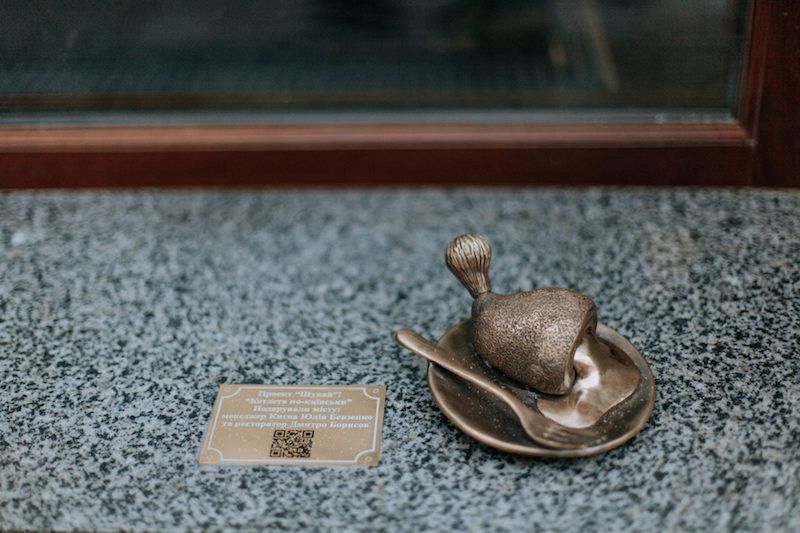 Chicken Kyiv is undeniably one of the most famous symbols of the capital thanks to its prominent name. The dish itself has a long and somewhat complicated history. Thus, one of the theories states that the recipe was invented by French chefs, who lived on the territory of the Russian Empire during the 19th century. It was then called 'côtelette de volaille'.
Chicken Kyiv is undeniably one of the most famous symbols of the capital thanks to its prominent name. The dish itself has a long and somewhat complicated history. Thus, one of the theories states that the recipe was invented by French chefs, who lived on the territory of the Russian Empire during the 19th century. It was then called 'côtelette de volaille'.
However, opposed to côtelette de volaille, Chicken Kyiv is filled with butter instead of sauce. Historians also state that Chicken Kyiv first appeared in the capital of Ukraine in 1918, during the reign of Pavlo Skoropadskiy. Then the iconic dish was served to German military commanders during the period of Nazi occupation. According to Kyiv tradition, the dish is served on the chicken bone, which is wrapped in paper.
Kyiv Elephant
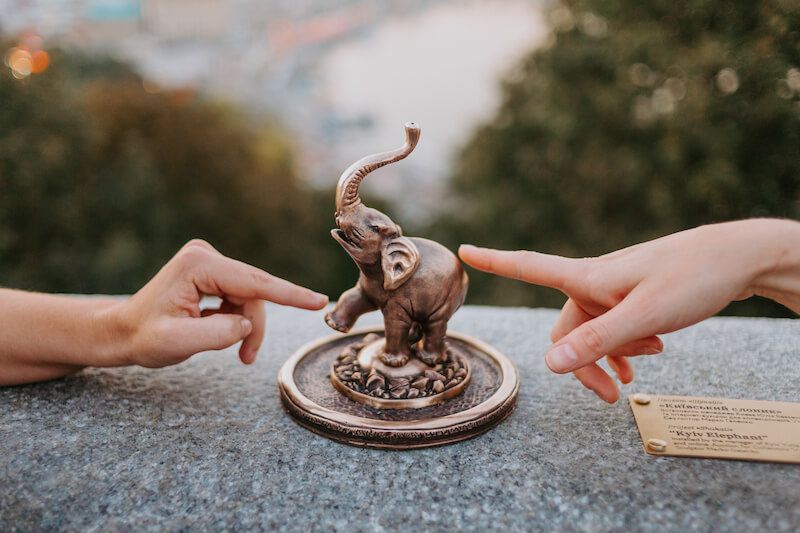 This adorable statue is dedicated to the revival of Kyiv and to those who still remember the fountain working. The elephant fountain was installed in the 1930s in Khreshchaty Park located near the European square and the People's Friendship Arch. The elephant's trunk shot water six meters high and the countercurrent flows placed along the fountain's borders make the show even more spectacular.
This adorable statue is dedicated to the revival of Kyiv and to those who still remember the fountain working. The elephant fountain was installed in the 1930s in Khreshchaty Park located near the European square and the People's Friendship Arch. The elephant's trunk shot water six meters high and the countercurrent flows placed along the fountain's borders make the show even more spectacular.
Naturally, it was quickly beloved by kids and adults that resided in Kyiv and appeared on numerous postcards as well as personal photographs throughout the year. The Elephant neighbored a popular dance pavilion Zhaba and cafe Slonik during the 1950-60s until the fountain was ultimately removed in the 1970s.
Kyiv Tram
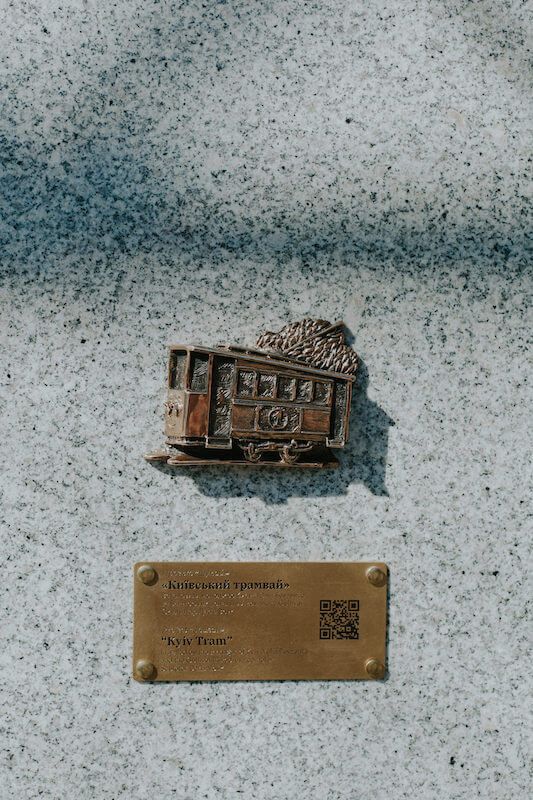 The capital of Ukraine followed technological innovations long before VR, AR and QR codes. In fact, the first electric-powered tram on the territory of the former Russian Empire. Moreover, it was the third in Europe after the Berlin Straßenbahn and the Budapest tramway. The tram line was launched on June 1, 1892, and had an overall length of 1.5 kilometers. The passenger carriages departed from Tsarska Ploshcha (modern European Square) on Khreshchatyk to go to Oleksandrivska Ploshcha (modern Kontraktova) on Podil.
The capital of Ukraine followed technological innovations long before VR, AR and QR codes. In fact, the first electric-powered tram on the territory of the former Russian Empire. Moreover, it was the third in Europe after the Berlin Straßenbahn and the Budapest tramway. The tram line was launched on June 1, 1892, and had an overall length of 1.5 kilometers. The passenger carriages departed from Tsarska Ploshcha (modern European Square) on Khreshchatyk to go to Oleksandrivska Ploshcha (modern Kontraktova) on Podil.
By the beginning of the 20th century, the tram was one of the most popular and well-serviced types of public transport. To give an idea, by 1913 Kyiv tram system had more than 20 fixed tram routes that would go in numerous directions, including Pushcha Vodytsia.
Kyiv Fountain
 The first fountains that were installed in Kyiv were not only beautifully cast but also had an important purpose - Kyiv dwellers used to get drinking water for their households from the fountains. The very first fountain was established in the capital back in 1849 on Tsarska Square (modern European Square).
The first fountains that were installed in Kyiv were not only beautifully cast but also had an important purpose - Kyiv dwellers used to get drinking water for their households from the fountains. The very first fountain was established in the capital back in 1849 on Tsarska Square (modern European Square).
Perhaps the most historically significant fountains of Kyiv are 7 Termin cast iron fountains. Some of them were lost, damaged or stolen. Luckily, two of them can still be found intact nowadays: one stands in Mariinsky Park and the other functions in a small square right near Zoloti Vorota.
Kyiv Gramophone
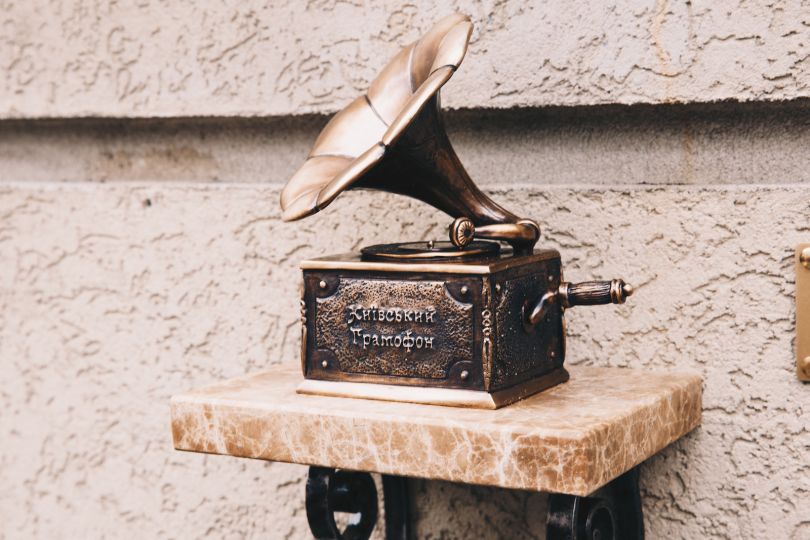 This sculpture reflects the story hidden among the city archive pages. At the beginning of the 20th century, head of a small German trading firm "International Extra-Record" Ernest Hesse and owner of the music store "Depot" J.J. Yindrzhyshek, opened a recording studio on Khreshchatyk. The duo decided to sell records but the production process was rather long and costly: the wax molds for records were made in Kyiv and then sent to Berlin to finish the product.
This sculpture reflects the story hidden among the city archive pages. At the beginning of the 20th century, head of a small German trading firm "International Extra-Record" Ernest Hesse and owner of the music store "Depot" J.J. Yindrzhyshek, opened a recording studio on Khreshchatyk. The duo decided to sell records but the production process was rather long and costly: the wax molds for records were made in Kyiv and then sent to Berlin to finish the product.
That's why Yindrzhyshek and Hesse ultimately decided to build a vinyl factory in Kyiv. However, the start of the factory was rather sad. Right before its opening in 1911, the factory caught fire and destroyed the most part of the equipment and records. Later that year after numerous talks with the authorities, the factory was renovated and had new equipment that wasn't considered a fire hazard. The factory soon opened prospered and even opened a recording studio on its premises.
Plinth brick
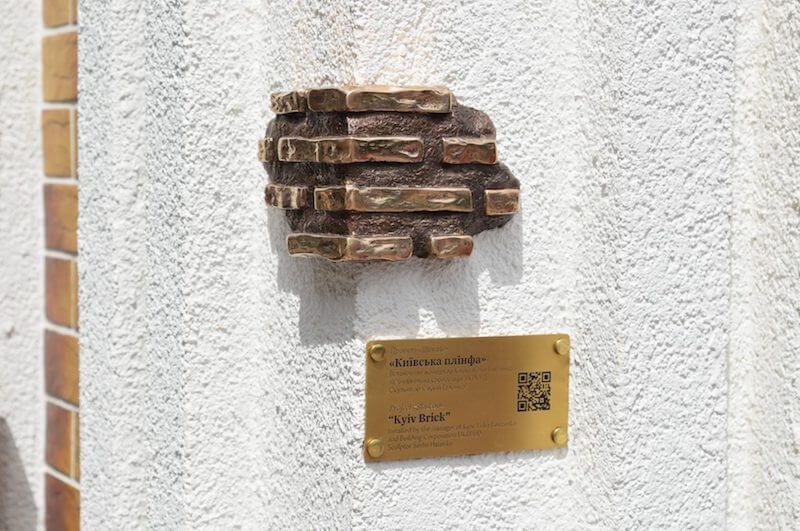 Finally, a plinth brick might be somewhat a surprising monument among others. Yet, it also has incredible historical significance none less than the Kyiv cake. The word 'plinth' originates from the Greek Πλίνθος, which can be roughly translated as a 'squared stone'. The material was largely used in the Byzantine architecture.
Finally, a plinth brick might be somewhat a surprising monument among others. Yet, it also has incredible historical significance none less than the Kyiv cake. The word 'plinth' originates from the Greek Πλίνθος, which can be roughly translated as a 'squared stone'. The material was largely used in the Byzantine architecture.
For Ukraine, it was one of the main building materials when it comes to churches and other sacred temples constructed throughout the 10-13th centuries. To give an idea about its significance, plinth is the basis of Zoloti Vorota and the UNESCO heritage site Saint Sophia Cathedral.
Source: managerofkyiv.com, teren.kiev.ua
Photo source: managerofkyiv.com. All images belong to their rightful authors.





